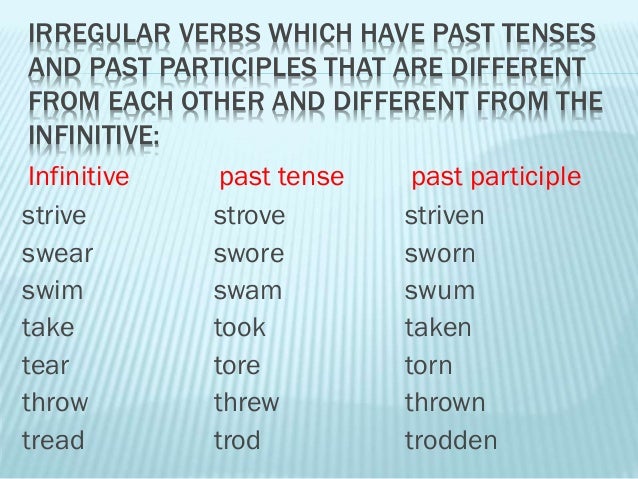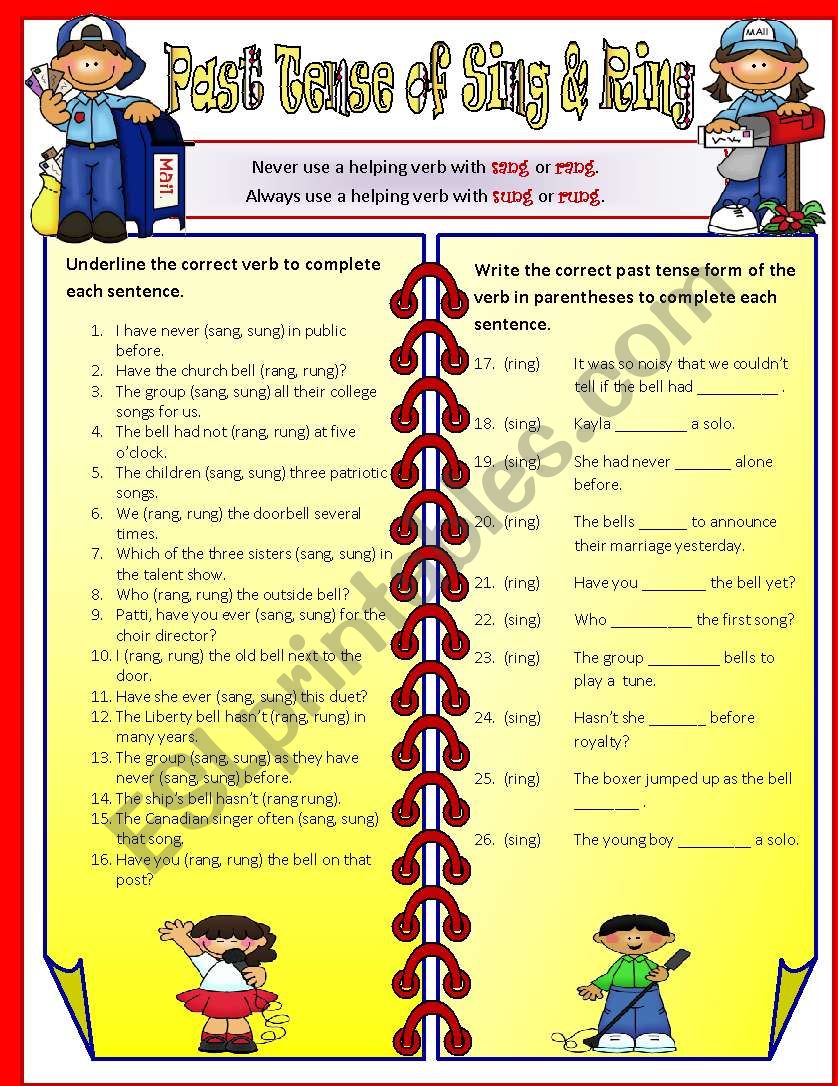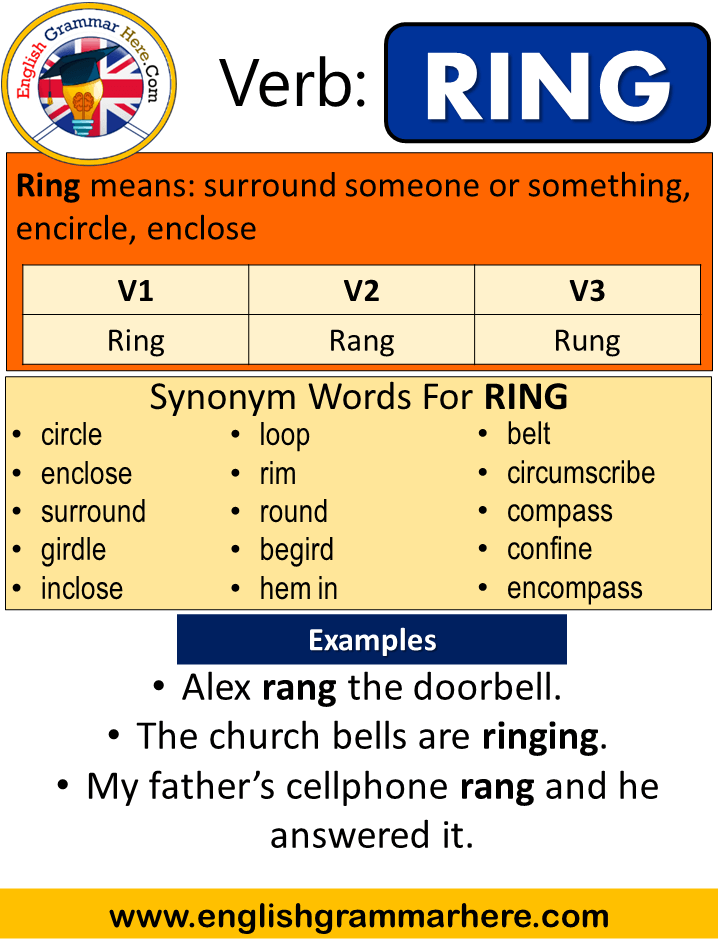

He the bell to get the students’ attention.Ģ. She would have rung the bell sooner if she had known they were leaving today.ġ. I would have rung the bell sooner if I had known they were leaving today. If they don’t answer the door soon, she will have rung the bell twice since this morning. If they don’t answer the door soon, I will have rung the bell twice since this morning. The past participle also includes the auxiliary verb have, has, or had depending on whether it is in the present, past, future, or conditional perfect. The past participle of ring changes the central vowel to u. They rang their bike bells when they approached the park. The simple past tense of ring changes the central vowel to an a. They ring their bike bells when they approach the park. Like standard verbs, ring has no change of form or vowel in the present tense. Ring conjugates as ring (present tense), rang (simple past), and rung (past participle). Voiceless sounds include p, t, k, f, s, ʃ, θ, tʃ.In verb conjugation, a regular verb follows a simple, predictable pattern, such as print (present tense), printed (simple past), and printed (past particle): I print, you printed, and they have printed.Īn irregular verb is one that forms its simple past tense and past participle with a non-standard pattern.
#The past tense of ring is plus
Voiced sounds include all vowels plus b, d, g, v, z, ʒ, dʒ, ð, l, r, m, n, ŋ, j, w. In other cases, it depends on whether the verb in its basic form ends with a voiced or voiceless sound. If the base-form verb ends with T or D, the -ed ending is /ɪd/: The correct pronunciation of this ending depends on the last letter of the verb in its basic form. If a regular verb ends with the vowel E, which is not pronounced, such as LIKE and CARE, we only add the final consonant -d to form the past:Ī common mistake for students is to mispronounce the ending -ed. If these verbs end with a consonant (in our example P) and there is a vowel before it (in our example O), the consonant is doubled: The monosyllabic regular verbs include, for example, to mop. If there is a vowel before the end -y, the change does not occur:ĭuplication of consonants with monosyllabic verbs If a regular verb ends with -y and there is a consonant in front of it, the past form is softened:


The shortened form is WASN’T or WEREN’T (She wasn’t eating / You weren’t eating.).We create the negative form by putting the negative NOT behind the auxiliary verb WAS/WERE.WERE is connected with the other persons. We use WAS in the first and the third person singular. Whether we use WAS or WERE depends on the person we are talking about.

Since WAS / WERE expresses the past, other forms of verbs will have the ending -ing. Therefore, we don’t translate them as “happen” or “exist”, they just help us to form this tense. The verbs WAS/WERE are the auxiliary verbs.Subject + WAS/WERE + action verb with ending – ING + rest of sentence What do we need to form the Past Continuous?


 0 kommentar(er)
0 kommentar(er)
